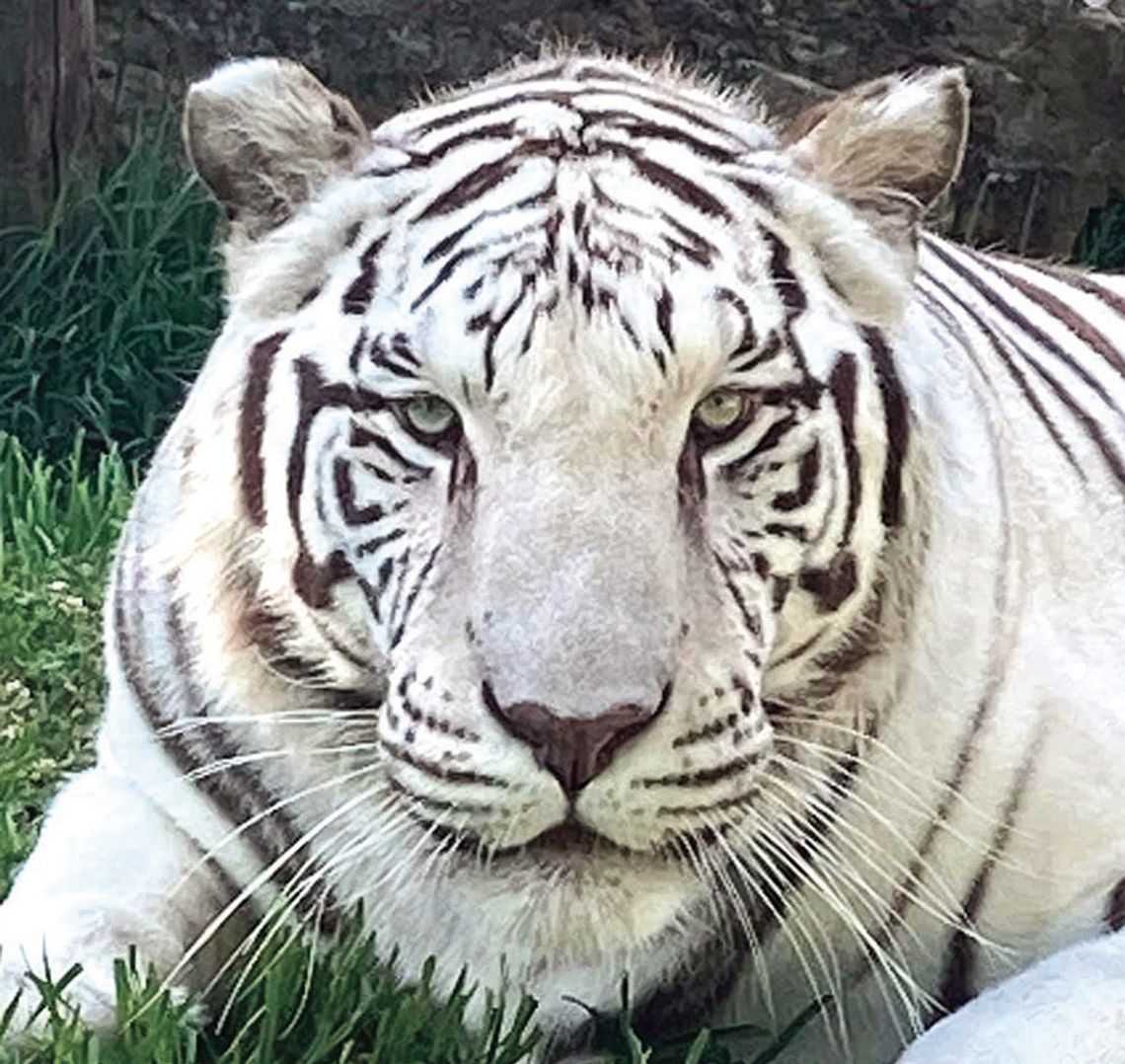The hearing in Lexington/ Rockbridge General District Court on animals seized from the Natural Bridge Zoo began last week, as the state brought in evidence and experts in an effort demonstrate neglect and abuse by the zoo.
Though a federal motion filed by their attorney to delay the hearing had been denied, zoo owners Karl and Debbie Mogensen will have an additional two weeks to prepare their defense before the hearing resumes on Jan 5.
The Virginia Office of the Attorney General, assisted by state police, searched the zoo on Dec. 6 and 7, seizing 95 animals. These animals are currently in state custody, though the number has increased to 96, as one of the monkeys has given birth.
In his federal filing to delay the hearing date, Mario Williams, attorney for the Mogensens, claimed that the Animal Unit of the Attorney General’s office was “trying to put [the Mogensens] out of business.”
In his opening remarks at last Wednesday’s hearing, he reminded the judge that the burden of proof in this case will rest of the state, which will need to show “beyond reasonable doubt” that the animals were being mistreated.
While Debbie Mogensen was present in the courtroom, Williams said Karl’s health prevented him from attending.
In her opening remarks, Senior Assistant Attorney General Michelle Welch spoke of “misery behind the scenes” at the zoo, claiming that the animals were seized for their own safety.
The state brought in a number of experts to support their case, including Amy Taylor, an investigator with the state Office of the Attorney General, who has been certified by state as an expert in animals crimes 23 times.
Taylor was present during the Dec. 6 search of the zoo, and testified that security was “severely lacking” — entrance gates at the front and side of the zoo were unlocked when police arrived before opening, and that nothing within the zoo grounds was locked, including in the animal habitats.
She said fences on the back of the property, bordering Dry Well Road, were low enough that animals within the zoo could potentially get over them.
“I would expect a higher sense of security, both in terms of something getting loose, of protecting the public, and for protecting the animals,” Taylor said.
In 2003, two bears escaped from the zoo and were killed, an incident which led to calls for the zoo’s closure at the time.
When staff began to arrive at the zoo on the morning of Dec. 6, they were informed of the search and allowed to continue through their feeding and maintenance duties, accompanied by a state trooper, Taylor said.
In speaking with the staff, Taylor noted that staff members were not assigned to a particular animal or area, but were moved throughout the zoo regularly, with most receiving only two weeks of training.
This can become an issue, she testified, as having the same staff interacting with the same animals every day means they are more likely to notice changes in those animals, and to respond more quickly to issues.
Darren Minier, director of animal welfare and research at the Oakland Zoo in California, also joined law enforcement at the zoo on Dec. 6 to evaluate the environmental and physical condition of animals.
Both Taylor and Minier spoke of a building on the property that housed tortoises, birds, and capuchin monkeys in a crowded and dirty environment.
“I’ve never seen this, in 25 years,” said Minier, who was concerned about different kinds of exotic birds being kept in close proximity, and about the monkeys — two groups kept in multiple cages, which had led to aggression among them, according to logs found at the scene.
Taylor observed that the tortoises were kept directly under the wire-bottom parrot cages, while Minier noted urine buildup, presumably from the monkey habitat, contaminating the tortoises’ food.
Minier recommended seizure of these animals, not only because of the condition of their environment when law enforcement arrived, but because of the habitats themselves, which he felt were designed in a way that made them difficult or impossible to properly clean.
Taylor also testified to drugs found on the property, medications which were expired or not properly labeled or kept. Several of these drugs were seized, including five vials of ketamine, a controlled substance.
Among the animals seized were 28 deceased animals and a number of animal parts, which Taylor said were found wrapped in bags or tarps, stored in a freezer with feed for other animals.
Though Minier said that zoos sometimes keep tissue samples to determine cause of death or for recording purposes, both what was saved at the Natural Bridge zoo and the way it was kept were concerning.
“Keeping legs, the tail of a few-day to a week-old giraffe, a head — you’re not taking biopsies from those,” he said. “I’ve never been at a facility that keeps parts past necropsy [animal autopsy], and I can’t think of a reason these parts would be kept.”
The dead animals seized were not all of the animals stored in the freezer, an amount which Taylor referred to as “overwhelming” and estimated to be more than 50.
She helped determine which dead animals should be taken —species which are endangered, vulnerable, or cases which needed further inspection — and sent to Virginia Tech for necropsy.
Among the animals sent for further investigation was a white Bengal tiger, euthanized by veterinarians who were part of the search.
Taylor said the tiger had cancer of the spleen, liver, lungs, and intestines.
According to Gabriel Spenser, special agent with the Bureau of Criminal Investigations of the Virginia State Police, Gretchen Mogensen, the zoo manager, was present for and cooperated with the euthanasia.
Spenser said the first attempt was recorded at 2:35, and the tiger’s time of death was marked as 3:23.
Animals that were not seized from the zoo include four giraffes and the zoo’s African elephant, Asha.
Though treatment of the elephant featured prominently in the search warrants, she was not on the property when law enforcement arrived on Dec 6.
The giraffes were left due to the difficulty of transporting them, but a significant portion of the testimony last week was dedicated to them.
Amy Phelps, assistant zoological manager at the Oakland Zoo, was qualified as an expert witness on the basis of 20 years of working in the field.
She noted a number of concerns about the barn in which the giraffes were held, including insufficient padding on the floor, too little heat during the day, gaps in the fence that they could potentially get stuck in, and little to no enrichment.
Though the three female giraffes are let out during the day, the male giraffe is kept in his stall. Phelps noted a pattern worn in the floor from his pacing.
She also noted problems in the physical condition of the giraffes. Two had overgrown hooves, which caused pain and difficulty walking, as well as repetitive behaviors — such as tongue tics and pulling at each other’s manes — which she said were due to their “behavioral and physical need not being met.”
Phelps recommended seizure of the giraffes, saying that “basic tenets of good husbandry and care for these animals are not being met.”
Another concern was found in what she described as the limited records of the zoo’s breeding program.
“From a calendar, two of the females had a calf and were bred again with a month. This means their bodies are never able to recover,” Phelps said. “And, of course — where are those calves?”
Records showed that calves were being shipped out at only 2 to 4 weeks old.
“Giraffes have very strong social bonds. Like elephants, they form a matrilineal herd, and females usually spend their entire lives together,” Phelps said. “Pulling the calves at two to four weeks puts undue stress, not just on the calf or the mother, but all of the females.”
Minier, in his testimony, also recommended seizure of the giraffes.
“I can’t see anything that’s working in this giraffe program,” he said.
Minier also highlighted the zoo’s breeding programs, in particular the attempts to hybridize white and red ruff lemurs, an endangered species.
“They may seem similar, but the white and red ruff are from different parts of Madagascar; they have different behavioral needs,” Minier explained.
“When you bring them together, they don’t understand each other’s language, so to speak, and when you create a hybrid, they don’t understand themselves, much less those they’re living with.”
“To hybridize endangered animals is unethical, in my opinion,” Minier said. “The only reason I can see for this is profit.”
In addition to what he called “a pattern, at the Natural Bridge Zoo, of using livestock and agricultural practices for exotic animals,” these breeding programs led Minier to question the legitimacy of the zoo.
“It would be difficult to call Natural Bridge Zoo a zoo. People can come and see the animals, but the evidence of feeding, of care, as belied by the budgets and the logs and what I could glean from the medical records — is that it’s more focused on propagation of animals,” he said.
“Most of the animals don’t even have names. The instructions on propagating and on pulling and bottle raising the young animals are more complete than those for food or enrichment.
.jpg)


